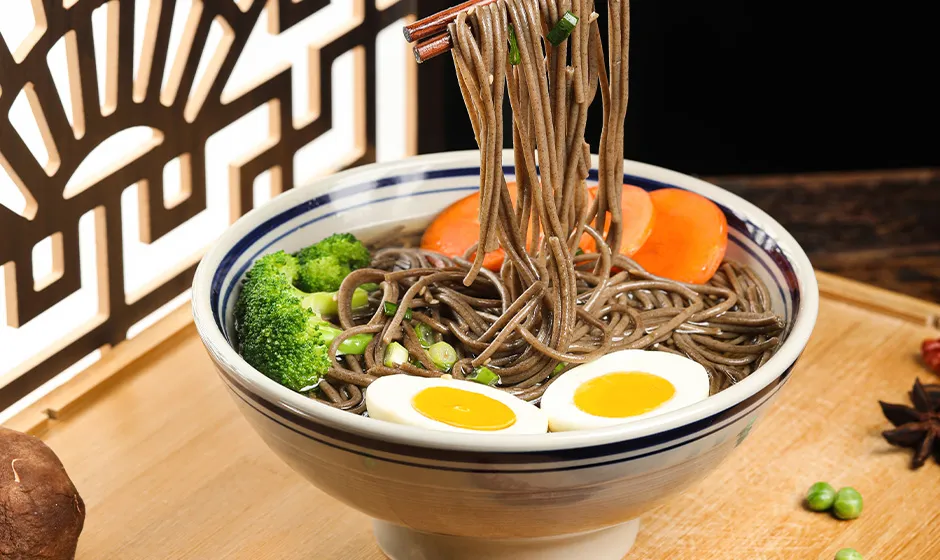soba noodles crafted from high-quality ingredients for a healthy meal option
Soba Made From Exploring the Versatility and Nutritional Benefits of Buckwheat Noodles
Soba noodles, originating from Japan, are a delicious and nutritious type of noodle made from buckwheat flour. Unlike many conventional noodles, which are primarily made from wheat, soba stands out not only for its unique taste and texture but also for its wide range of health benefits. In this article, we will delve into the production of soba noodles, their versatile uses in various dishes, and the nutritional advantages that make them a staple in both traditional and modern diets.
The Process of Making Soba Noodles
Soba noodles are traditionally made from a mixture of buckwheat flour and water. The ratio of buckwheat to water can vary, influencing the texture and flavor of the finished product. For authentic soba, 100% buckwheat flour is used, resulting in a gluten-free option that is suitable for individuals with gluten intolerance. The process begins by mixing the flour with water to form a dough, which is then kneaded until it reaches the right consistency. After resting, the dough is rolled out and cut into thin strands, creating the iconic soba shape.
In some regions, particularly in the colder mountainous areas of Japan, soba is often made using a blend of buckwheat and wheat flour. This variation, known as ni-hachi soba, typically comprises 80% buckwheat and 20% wheat flour. This blend enhances the elasticity, making the noodles easier to handle during preparation while still providing the distinctive nutty flavor of buckwheat.
Culinary Versatility of Soba Noodles
One of the remarkable features of soba noodles is their versatility in the kitchen. They can be enjoyed hot or cold, making them suitable for different seasons and occasions. When served cold, soba is often presented as “zaru soba” on a bamboo tray, accompanied by a dipping sauce called tsuyu. This refreshing dish is particularly popular during the hot summer months, offering a light yet satisfying meal.
soba made from

For those craving warmth, soba can be served in a comforting broth, as seen in soba soup, which combines various ingredients such as vegetables, tofu, and proteins. The broth can be flavored with soy sauce, mirin, or miso, allowing for endless variations that cater to individual taste preferences. Additionally, soba noodles can be integrated into stir-fries or salads, where their robust flavor complements a myriad of ingredients.
Nutritional Benefits of Soba Noodles
Soba noodles are not just a culinary delight; they are also packed with nutritional benefits. Buckwheat, the primary ingredient, is a highly nutritious pseudo-grain that is rich in complex carbohydrates, dietary fiber, and essential vitamins and minerals. One of the standout features of buckwheat is its high protein content, which includes all eight essential amino acids. This makes soba an excellent choice for vegetarians and vegans seeking a plant-based protein source.
Moreover, soba is known for its low glycemic index, which means it helps maintain stable blood sugar levels. This is particularly beneficial for individuals managing diabetes or those looking to maintain consistent energy levels throughout the day. The fiber content in soba also supports digestive health and contributes to a feeling of fullness, which can aid in weight management.
In addition to these advantages, buckwheat is rich in antioxidants, which play a crucial role in combating oxidative stress and reducing inflammation in the body. The presence of rutin, a flavonoid found in buckwheat, has been linked to improved cardiovascular health by strengthening blood vessels and improving circulation.
Conclusion
In conclusion, soba noodles made from buckwheat flour are a versatile and nutritious addition to any diet. With their unique flavor, various culinary applications, and impressive health benefits, soba noodles are more than just a traditional Japanese dish—they are a global food phenomenon. As more people become aware of the advantages of incorporating whole grains into their diets, soba is poised to gain even more popularity. Whether enjoyed cold in a zaru soba dish or warmed in a savory broth, soba noodles offer a delicious way to nourish the body while celebrating the diverse world of culinary traditions.
-
Unleash Your Inner Chef with Delectable Italian Pasta CreationsNewsAug.01,2025
-
Savor Health and Flavor: Irresistible Soba Noodles for Sale Await!NewsAug.01,2025
-
Nourish Your Body with Premium Organic Ramen - A Culinary Delight AwaitsNewsAug.01,2025
-
Elevate Your Dishes with Our Exquisite Kinds of Egg NoodlesNewsAug.01,2025
-
Dive into Flavorful Convenience with Our Ramen OfferingsNewsAug.01,2025
-
Discover Exquisite Types of Naengmyeon and Chilled Soba NoodlesNewsAug.01,2025
-
Is Whole Wheat Pasta Healthy?NewsMay.30,2025
Browse qua the following product new the we

















































































































